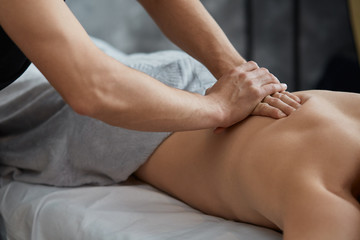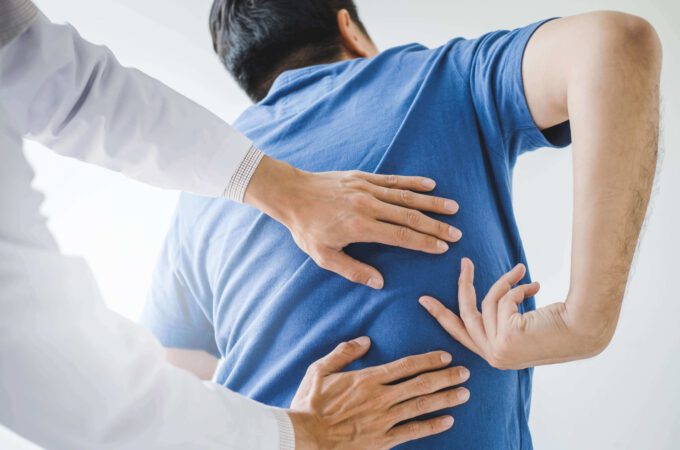Different Types of Massage
Flow State Massage can be a powerful tool for healing. But it is important to find the right therapist for you. Get a personal recommendation or check out online directories to find licensed and certified professionals.
Therapeutic massage decreases the stress hormone cortisol, lowers blood pressure, and relaxes muscles. It also increases circulation, bringing fresh oxygen to damaged tissues.
Swedish massage is a form of bodywork that involves gliding the hands over the body with oil or lotion as a lubricant. The therapist applies pressure to the muscles and then moves them in a circular motion, which can relieve tension. It also stimulates the nerve receptors, which help increase circulation and blood flow. It can be used to treat many conditions, including high blood pressure and depression.
Research has shown that massage decreases cortisol and increases the production of feel-good hormones such as serotonin. It can also improve sleep by calming the mind and preparing the body for rest. Moreover, it can increase flexibility by relieving tight, knotted muscles. A study found that a Swedish massage can improve the symptoms of generalized anxiety disorder (GAD).
A massage can also improve your immune system by stimulating the lymph nodes, which helps your body get rid of toxins and debris. In addition, it can reduce the risk of cardiovascular disease by reducing stress and improving heart health. It can even lower your blood pressure by lowering the heart rate and decreasing blood clots.
When choosing a massage therapist, it is important to find one who has experience and is licensed. Choose a therapist who works in a reputable spa, and be sure to communicate with them about what kind of massage you want. For example, you should tell them if you have any medical concerns. They will be able to guide you to other types of massage that can address your needs. Also, be sure to drink plenty of water after the massage to flush out any toxins.
Aromatherapy
Aromatherapy massage combines the nurturing art of classic massage with the addition of essential oils. The oil is absorbed through the skin and carried to the bloodstream where it works with your body’s natural systems to help relax, revive, detoxify, and re-balance. During an aromatherapy massage, the therapist will apply a few drops of essential oil to your bare skin and then use gentle massage techniques while playing soothing music.
When inhaled, the aroma of the essential oils can affect your mood, triggering the release of feel-good brain chemicals and easing emotional distress. When massaged, the essential oils are absorbed through the skin into the bloodstream and lungs. They can also boost circulation, which improves oxygenation and distribution of nutrients to the tissue.
Research shows that when you get a massage, your heart rate and blood pressure decrease and your stress hormone levels drop, resulting in less pain and more relaxation. You can even experience a natural euphoric high from the touch of the therapist’s hand, which triggers the production of the chemical oxytocin – the ‘love hormone’ that helps us bond socially and creates a sense of well-being.
The therapist will discuss your health history and the desired outcome of the treatment before choosing a blend of essential oils to match your needs. If you are undergoing cancer treatments, it’s important to tell the therapist as some essential oils may interact with certain medications or have side effects when used on sensitive areas of the body. Your therapist will dilute the essential oils in a carrier oil and massage them into your body, while using gentle, light or firm pressure depending on your individual needs.
Deep tissue
Deep tissue massage involves the manipulation of deeper muscle layers and connective tissue. It is more intensive than other types of massage, and is often used to treat injuries. This technique is also effective in reducing pain and stiffness caused by chronic conditions, such as fibromyalgia and sciatica. It also helps improve flexibility and reduces the buildup of scar tissue.
The deep tissue massage is a type of bodywork that uses slow strokes to target the muscles and fascia. It may feel uncomfortable at times, but the therapist will adjust the pressure to your comfort level. It is normal to experience some pain after the session, but it should dissipate within a few days. It is recommended to drink plenty of water after a deep tissue massage, as this will help your body to flush out any toxins.
It is important to communicate with your massage therapist during the session. You should let them know if you are feeling any discomfort and ask them to apply less pressure or move to a different area of the body. It is also important to discuss any health concerns or medication you are taking with your therapist before the massage.
While it is safe for most people, deep tissue massages should not be done if you have a blood clotting disorder or take blood thinners. The strong pressure can cause blood clots to break loose and be dislodged. It is also not advisable for women who are pregnant or have osteoporosis. In these cases, a gentler type of massage, such as Swedish massage, might be more suitable.
Sports
Sports massage is designed to enhance the performance of people involved in intense physical activity. Its main benefits include decreasing the risk of injury, increasing flexibility, and speeding up recovery. In addition, it can help in the prevention of muscle fatigue and stiffness. It also reduces the build-up of waste products in the muscles, such as lactic acid and pyruvic acids. The removal of these toxins is a critical factor in the enhancement of your overall athletic performance.
Another physiological effect of a sports massage is an increase in tissue temperature. This is achieved by the friction of the hands against the tissues during massage. The heat created increases the blood flow within the tissues, allowing for a greater delivery of oxygen and nutrients to the area. This in turn will improve the condition of the muscle fibres, fascia tissue and tendons. The warmth will also allow the muscles to contract more efficiently, thereby lessening the risk of strains or sprains.
This is particularly important during training when a large amount of lactic acid builds up in the muscles, which can cause a great deal of pain and discomfort if not removed. This is where pre-event sports massage comes in – it warms the muscles, improves their flexibility and provides a feeling of psychological readiness for exercise and competition.
A sports massage can also be useful for breaking down adhesions within the muscles. Adhesions form as part of the inflammatory healing process and can interfere with normal movement by binding down tissues. The deep friction techniques used in a sports massage will break down the adhesions, which will allow the muscles, ligaments and tendons to move freely.
Self-massage
Many people consider massages to be a once-in-a-while splurge, but it is a good idea to do self-massage between professional sessions. This will ease tight spots and help you feel lighter, both physically and emotionally. A massage can also help reduce the risk of injury, which is especially important for athletes.
A self-massage massage can be done at home and is cheaper than a professional treatment. It also helps you get to know your body better. This will allow you to spot areas that need special attention. It can help you to identify and work out trigger points, tight knots in the muscle tissue that can refer pain to other areas of the body.
Neck and shoulder pain is a common problem that can be caused by poor posture, hunching over computers, or reading in bed without enough support. To relieve the tension, try massaging the middle trapezius muscle in your neck. This is the muscle that runs from your ear to your shoulders. Apply pressure to this area for 30 seconds to 1 minute. This will loosen the muscles and can relieve nerve pain.
Another great way to relieve pain is by massaging your feet. You can use your hands or a small ball or foam roller. This will improve circulation, break up the adhesions that can cause problems for your joints, and increase relaxation. It can also aid in recovery from injuries, such as shin splints or Achilles tendonitis.
If you suffer from chronic back or neck pain, you may need to get a professional massage. However, if you are experiencing severe pain or have a serious medical condition, you should talk to your doctor before trying a self-massage.


